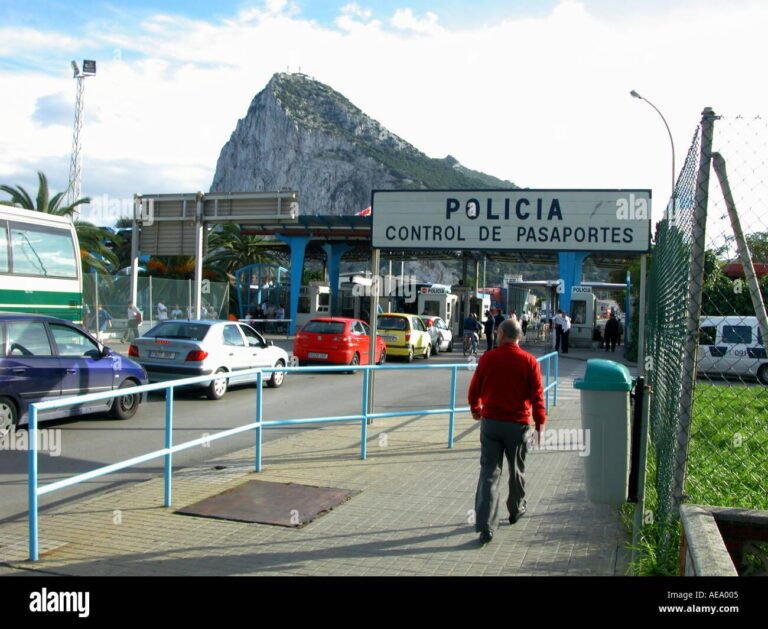The long-standing border between Gibraltar and Spain is set to disappear in 2026, according to a landmark post-Brexit agreement announced recently. Under the terms of the deal, which seeks to ease travel and trade disruptions caused by the United Kingdom’s departure from the European Union, the frontier will be effectively removed, allowing for seamless movement between the British Overseas Territory and Spain. The move marks a significant development in the often-contentious relations surrounding Gibraltar’s status and aims to enhance cooperation and economic integration in the region.
Gibraltar Spain Border to Disappear in 2026 Enhancing Cross-Border Cooperation and Mobility
Starting in 2026, the long-standing physical checkpoint between Gibraltar and Spain is set to be dismantled, marking a historic shift in regional relations following years of diplomatic negotiations. This bold move is geared towards creating a seamless border experience, which will facilitate smoother daily commutes for residents and promote a significant boost in economic activities across the area. By removing the border infrastructure, authorities aim to bridge divides, reduce transit times, and foster a unified space where cooperation can thrive despite the complexities introduced by Brexit.
Key benefits of this agreement include:
- Enhanced freedom of movement for both Gibraltar and Spanish nationals
- Joint customs and security operations ensuring efficiency and safety
- Streamlined trade processes to invigorate local businesses
- Collaborative environmental and infrastructure projects across the border zone
| Aspect | Current Situation | Post-2026 Outlook |
|---|---|---|
| Border Controls | Physical checkpoints with passport checks | Border removed, with integrated electronic verification |
| Trade Flow | Subject to customs delays and inspections | Expedited procedures with shared customs framework |
| Commuter Experience | Lengthy wait times and limited access hours | Unrestricted crossing, 24/7 access |
Post Brexit Agreement Sets Framework for Economic Integration and Regulatory Alignment
The recently finalized agreement heralds an unprecedented phase of cooperation between Gibraltar and Spain, effectively dissolving the longstanding border by 2026. This landmark deal extends beyond mere territorial arrangement, embedding principles of economic integration and regulatory alignment that promise smoother trade flows and shared standards across key sectors. Businesses operating in the region can anticipate reduced customs checks and streamlined procedures, bringing Gibraltar into closer economic sync with the European Union while respecting the UK’s sovereignty. Crucially, the framework also addresses mobility concerns, offering new provisions for residents and workers that foster social cohesion alongside economic progress.
Among the key elements shaping this integration are regulatory benchmarks agreed upon for finance, environmental policies, and digital services, designed to minimize bureaucratic friction. The table below highlights the core areas set for alignment and their projected impact:
| Sector | Key Regulatory Alignment | Expected Benefits |
|---|---|---|
| Trade & Customs | Single window customs clearance | Smoother goods movement, reduced delays |
| Financial Services | Shared anti-money laundering standards | Enhanced market access, investor confidence |
| Environmental Policy | Common sustainability targets | Joint conservation efforts, regulatory predictability |
| Digital Economy | Data protection harmonization | Secure data flows, innovation facilitation |
- Elimination of border checks, speeding up daily commutes and trade
- Greater regulatory coherence boosting investor trust
- New frameworks for cross-border labor mobility and residency
Experts Urge Authorities to Prepare Infrastructure and Harmonize Policies for Seamless Transition
Authorities on both sides of the Gibraltar-Spain border are being called upon to accelerate efforts in upgrading critical infrastructure to accommodate the anticipated surge in cross-border activities from 2026 onwards. Experts emphasize that investments in transport networks, customs facilities, and digital systems are essential to facilitate smooth and efficient movement of goods and people. Failing to modernize these elements risks bottlenecks and delays that could undermine the benefits of the post-Brexit agreement. Coordination between local governments and EU institutions will play a pivotal role in managing the transition seamlessly.
In tandem with infrastructure upgrades, harmonizing regulatory frameworks is deemed equally vital. Experts advocate for the alignment of customs procedures, health and safety standards, and data sharing protocols to minimize friction and ensure legal clarity. The following table summarizes key policy areas demanding urgent harmonization:
| Policy Area | Primary Objective | Expected Benefit |
|---|---|---|
| Customs Procedures | Streamline border checks | Reduce wait times |
| Health & Safety | Align standards for goods | Facilitate trade compliance |
| Data Sharing | Ensure real-time information flow | Enhance security and monitoring |
- Integrated border management teams to coordinate operational activities
- Joint training programs for customs and security personnel
- Public communication strategies to inform cross-border communities and businesses
In Retrospect
As the 2026 deadline approaches, the imminent removal of the Gibraltar-Spain border marks a pivotal step in post-Brexit relations between the United Kingdom, Spain, and the European Union. This development not only promises to ease daily crossings for thousands but also signals a new chapter of cooperation and integration in the region. Stakeholders and residents alike will be watching closely as the provisions of the deal come into effect, shaping the future dynamics of this long-contested frontier.




